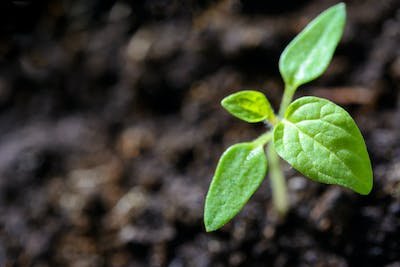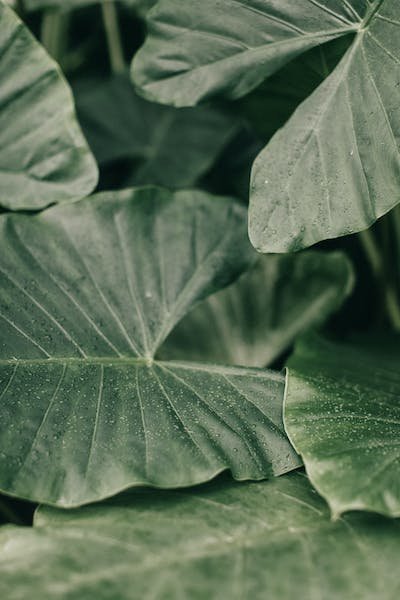Photosynthesis is a process in which plants, algae, and some bacteria use the energy from sunlight to produce sugar. This process is essential for life on earth because it provides the oxygen that humans need to breathe.
Photosynthesis is a process by which plants, algae and some bacteria use the energy from sunlight to produce sugar.
This process is essential for life on earth because it provides the oxygen that humans need to breathe. Photosynthesis is the chemical process by which plants and other organisms use light energy to produce sugars from carbon dioxide and water. The word photosynthesis comes from the Greek roots φωτός, "photo," meaning "light," and σύνθεσις, "synthesis," meaning "putting together."
In this article, I will be discussing two of the most important aspects of photosynthesis:
how plants grow with help from photosynthesis and what role technology plays in farming today.
Photosynthesis is the process through which plants and other organisms convert light into chemical energy.
This process occurs in two stages:
- The light-dependent reactions use the energy of sunlight to make sugars, lipids and nucleotides.
- The light-independent reactions release oxygen as a byproduct.

Photosynthesis is the process by which plants and other organisms convert light energy into chemical energy. Photosynthesis is a process that converts light energy into chemical energy, which can be used to produce the food that sustains life on earth and to remove carbon dioxide from the atmosphere.
The first step in photosynthesis is the conversion of water and carbon dioxide into sugars and oxygen by a process called dark reaction. The second step in photosynthesis is the conversion of sugar back into water, carbon dioxide, and oxygen through a process called light reaction.
Plants that produce their own food are called autotrophs. They can make food because they have chlorophyll in their cells. Chlorophyll captures sunlight for photosynthesis. This is how plants make glucose or sugar for themselves to grow and live on. Plants also make oxygen as a byproduct of photosynthesis.
Photosynthesis is a process by which plants, algae, and certain bacteria use light to synthesize sugars from carbon dioxide and water. This process converts the chemical energy of sunlight into the chemical energy of sugars. The most common form of photosynthesis is called "C3 photosynthesis." This type of photosynthesis occurs in plants, algae, and cyanobacteria. C3 photosynthesis splits water molecules into oxygen (O2) and hydrogen (H2). The hydrogen is then combined with carbon dioxide to form carbohydrates like glucose. The oxygen that's released during this reaction is then used by animals for respiration or converted into other compounds like organic acids or alcohols.
Photosynthesis is a process by which plants, algae and some bacteria use light energy to produce sugar and oxygen. It is the process by which plants turn light into food.
Some people call it "the most important chemical reaction on earth". This is a process that does not need any help from us, but we can make it more efficient by using technology.

It is a form of carbon fixation. The energy used in photosynthesis comes from light energy or sunlight. The process starts with a reaction between water and carbon dioxide to produce organic compounds (such as glucose) and oxygen gas, releasing heat as a by-product. It is a complex process that takes place in two stages. The first stage is called the light-dependent reactions, while the second stage is called the light-independent reactions.
In order for any organism to complete photosynthesis, it must have chlorophyll. Chlorophyll absorbs light from both sunlight and artificial sources, like fluorescent lamps, to create chemical energy. This chemical energy fuels the plant’s growth and development by converting carbon dioxide into sugars with oxygen as a byproduct.
Photosynthesis is a natural process which plants use to produce their own food. In this article, we will discuss how it works and why it is important for living things on Earth.
Photosynthesis is the process by which green plants, algae, and certain bacteria use sunlight to make sugar molecules from carbon dioxide and water. The energy of the sun drives this chemical reaction that converts the elemental components of air into life-sustaining sugars that can be used by living things.
This chemical energy is used for the plant's growth and development. The oxygen we breathe comes from plants during this process. It is one of the most important natural processes on Earth. It occurs when carbon dioxide from the air combines with water in the presence of sunlight to produce sugars, which are then converted into oxygen as well as other substances.
• Links Consulted
(1). https://www.livescience.com/51720-photosynthesis.html
(2). https://www.britannica.com/science/photosynthesis
(3). https://www.biologyonline.com/dictionary/photosynthesis
(4). https://courses.lumenlearning.com/suny-wmopen-biology1/chapter/photosynthesis/
Thanks for your contribution to the STEMsocial community. Feel free to join us on discord to get to know the rest of us!
Please consider delegating to the @stemsocial account (85% of the curation rewards are returned).
Thanks for including @stemsocial as a beneficiary, which gives you stronger support.